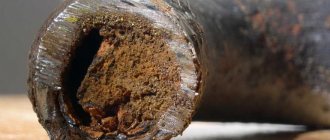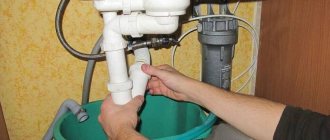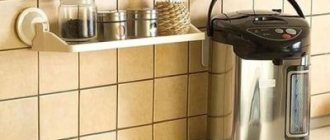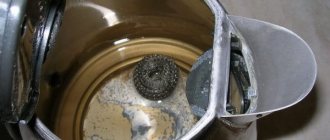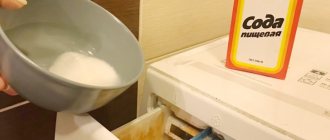Description and principle of action of caustic soda
Sodium hydroxide (NaOH), or caustic soda, is an alkaline substance in the form of solid white crystals and flakes that are highly soluble in water. If it comes into contact with the skin, the sodium hydroxide solution causes a severe burn. Caustic copes well with any contaminants and corrodes organic compounds.
As can be seen from the formula, NaOH is a substance that consists of sodium, oxygen and hydrogen. This alkali does not occur in nature in its pure form. It is obtained at chemical plants from sodium carbonate or bicarbonate.
Properties of caustic:
- soluble in water and alcohol;
- does not burn;
- dissolving in water, heats the liquid to 60 degrees;
- the solution has soapy qualities;
- does not react with iron and copper;
- dissolves aluminum, zinc, plastic;
- ignites in reaction with ammonia;
- does not dissolve in acetone.
In the solid state, caustic soda is white, and in the dissolved, liquid state it is transparent. This substance is odorless. The main property of caustic is to dissolve in water and form a solution that quickly corrodes any organic compounds. Due to this quality, caustic soda is used for cleaning pipes.
Where can I buy?
sells at the most affordable prices. To order, simply click on the appropriate button next to the product photo and enter your contacts.
Today in stores you can find a large number of different chemicals intended for cleaning sewers. However, you can clean your pipes with baking soda and vinegar. These substances are very often used to remove small stains.
Baking soda, together with vinegar, react with fat. As a result, it begins to dissolve. For more effective pipe cleaning, you can use various devices:
- plunger;
- Spiral;
- Cable.
Baking soda, together with vinegar, successfully cleans drains:
- Kitchen sink;
- toilet;
- Baths;
- Shower cabin;
- Sewerage.
To start cleaning pipes, you need to have:
- Baking soda;
- Pure vinegar;
- Boiled water;
- A rag to cover the drain hole in the sink;
- Latex gloves;
- Ershik;
- Plunger.
Carrying out this operation does not cause any difficulties. The cleaning scheme looks like this:
- Half a box of soda should be poured into the hole. The powder must be dry;
- After this, you need to pour 100 ml of ordinary table vinegar there. For higher efficiency, it needs to be slightly warmed up;
- After filling, the drain hole must be well sealed, for example with an ordinary rag, trying to create a high tightness.
When baking soda begins to mix with vinegar, a large amount of foam is released. At this time, it may even begin to spill out. The rag prevents this action. Distribution of the substance must occur inside the sewer pipe. The clog begins to dissolve, and the debris is pushed down;
- You need to wait about 30-40 minutes. During this time, the foam will dissolve the resulting plug, which prevents dirty water from reaching the riser.
- Then you need to boil the kettle, remove the rag plugging the drain. After the allotted time has passed, you need to pour boiling water into the opened hole.
Varieties and areas of application
Sodium alkali is used in industry (cellulose, food, automotive, chemical) and in everyday life (for cleaning sewer metal, cast iron and water plastic pipes). Caustic sodium is used in cosmetology, to remove warts, and for medical purposes, for disinfection (kills bacteria, viruses, fungi). During an epidemic, caustic soda can be added to water for washing floors.
Sodium hydroxide is a component of washing powders and is good at removing old stains. Caustic is used in the kitchen to clean grease stains, scale and dirty dishes. This substance is the basis for making handmade soap.
See also
25 best products for cleaning the inside of a toilet tank at home
Caustic soda is sold in the form of white powder, flakes, crystals, granules and liquid alkali solution. The dry reagent consists of 99 percent sodium hydroxide. The liquid solution contains at least 46 percent basic alkaline substance. For household needs, dissolved or granulated, powdered caustic soda is purchased.
This product can easily clean drain pipes in the bathroom, kitchen and toilet. Caustic sodium quickly eats away blockages that form at bends in the pipeline. Caustic is able to remove plugs of fat, hair and food debris in a matter of minutes. This substance even removes limescale deposits that form on the walls of pipes.
Liquid caustic soda solution is usually sold in cans (5 liters). There are gels on sale containing sodium hydroxide (“Mole”, “Mr. Muscle”). The dry substance has the form of powder or granules and is called: “caustic soda”, “caustic soda”, “caustic”.
Advantages and disadvantages
Advantages and disadvantages
removes any dirt in minutes;
corrodes plugs from hair and food debris;
removes deposits on pipe walls;
low price ($1 per 1 kg).
corrodes the skin, so you need to wear gloves and a mask when working with the substance;
It is forbidden to use thin plastic containers to prepare the solution;
when dissolved in water, a reaction occurs, the liquid heats up to 60 degrees;
If used too often, it will corrode the enamel of sinks and bathtubs.
How to properly use for drain cleaning
Sodium hydroxide is typically used to clean sewer pipes. The substance can be used in dry (undiluted) and liquid (diluted) form. A powder or granular reagent has a more caustic effect. When working with caustic soda, you need to wear rubber gloves and a mask.
Solution
You can immediately buy sodium alkali in a liquid state or make a solution yourself at home, that is, dilute the powder or granules with plain water. The higher the concentration of the cleaning agent, the more effective it is.
Expert opinion
Zakharova Irina Yurievna
Cleaning professional with 15 years of experience. Our best expert.
Ask a Question
Usually, to clean the sewer, 2-3 kg of granules or powder are taken per 7 liters of water. The solution can be prepared in a plastic or iron bucket of 10-12 liters. Only take cold water. After all, when preparing the solution, a strong reaction occurs, and the liquid heats up to almost 60 degrees.
The pipes are cleaned with caustic soda dissolved in water in 2 stages. First, half a bucket of solution is poured into the sewer and waited for 1.5-3 hours. During this time, caustic sodium begins to eat away at the clog. Then they pour out another half bucket of solution and again wait 1.5-3 hours. After cleaning with caustic soda, the pipes are washed with plenty of water.
See also
How to clean your laptop from dust at home
As a preventive measure, you can take only 250 grams of powder per 2 liters of liquid. A weak concentration solution is poured into the pipe and waited for 1.5-3 hours, and then 1-2 buckets of water are poured into the sewer for flushing. You can repeat the cleansing procedure no earlier than six months later.
Dry powder
Heavily contaminated drains can be cleaned using a dry, undiluted product. Caustic soda granules or powder should be poured directly into the pipe. It is recommended to first pour a bucket of warm water down the drain.
To clean the pipeline, take no more than 250 grams of powder (6 tablespoons). This is a single dose. The powder poured into the pipe is poured with a glass of water. After this procedure, the reaction begins. The caustic solution eats away organic debris accumulated in the pipe within 1.5-3 hours. Then the sewer must be flushed, that is, pour out 1-2 buckets of water.
Dry powder can be periodically poured into the drain to prevent blockages. True, in this case you need to take not 250 grams, but 100 grams of the substance. The dry method of cleaning sewer pipes is considered the most effective. The main thing is to use the powder for its intended purpose.
Cast iron and plastic pipes are cleaned with caustic soda. After using caustic soda, the pipeline must be washed with plenty of water so that the soda does not remain on the walls and corrode metal or plastic.
Gel
To clean the sewer, you can buy a ready-made gel based on sodium hydroxide in the supermarket (Mole, Sanfor, Mister Muscle, Chistin Stok, Sanox). Cleaning of pipes must be carried out according to the instructions. Usually 200-250 ml of gel is poured into the sewer and wait for the product to begin to corrode the pollution.
Before using the cleaning agent, pour a bucket of warm water into the pipeline. It is recommended to work with the gel wearing a mask and rubber gloves. After waiting 1.5-3 hours, you need to pour another 1-2 buckets of water into the pipe to clear the drains of dirt and cleaning agent residues. This method of cleaning a pipeline has a more gentle effect and is used mainly for prevention or to remove small blockages.
See also
10 best ways to clean a glossy kitchen at home
Second option
Unlike the first method, when dry soda is poured, it is necessary to prepare a solution in advance that will be poured into the pipe. This technology is used to clear pipes from blockages into which it is difficult to pour dry powder.
Sequencing:
- Pre-treat the pipe by pouring about two liters of boiling water into it;
- Leave the pipe alone for 20 -30 minutes;
Then a solution is prepared. For one part baking soda you need to take three parts boiling water. The solution must be thoroughly mixed, heated and poured into the pipe.
- Wait about 5 - 10 minutes, then add vinegar. The amount of vinegar should be approximately equal to the volume of soda.
Then the operation is performed similarly to the first method. The drain must be closed and wait one hour. The effectiveness of this method is not very high. If a severe blockage has formed in the pipe, this treatment will have to be repeated several times, or use a special cable.
Instructions for use for cleaning a cesspool
Using caustic soda, you can clean the cesspool drain and liquefy the sludge that has hardened at the bottom. The caustic solution is poured directly into the tank or first into the sewer pipe.
To clean the pit, take no more than 3-5 kg of granular or powdery substance. The caustic solution is diluted in a bucket of water. You can pour sodium hydroxide into a waste tank to liquefy the sludge that has hardened at the bottom.
An alkaline solution is prepared to clean wastewater. For 7 liters of cold water take 2 kg of caustic soda. The solution is poured into the pipeline, and from there it flows into the drain pipe. The alkali dissolves all the debris that it encounters along the way. Corroding organic matter, the caustic solution cleans the pipes and drains into the cesspool. In the tank, the alkali settles to the bottom and dilutes the sludge.
Preparation of caustic soda solution
In order to dilute soda with water, you should follow certain rules:
Preparation of the solution
the container must be resistant to alkali, for example, a thick-walled plastic bucket with a capacity of up to 12 liters is suitable; to prepare the product you need to take only cold water; You cannot pour water into the alkali, you must add soda to it, otherwise the resulting hot alkali may splash; since a large amount of heat is released during the dissolution process, the reagent must be added in small portions, with gentle stirring; a hot solution emits caustic fumes, so it is better to use a gauze mask; It is preferable to prepare the caustic solution in the open air; if this is not possible, then you should open the window to ventilate the room; For 7 liters of H2O, usually from 2 to 4 kg of soda is taken, depending on the type of residential building and sewage system.


